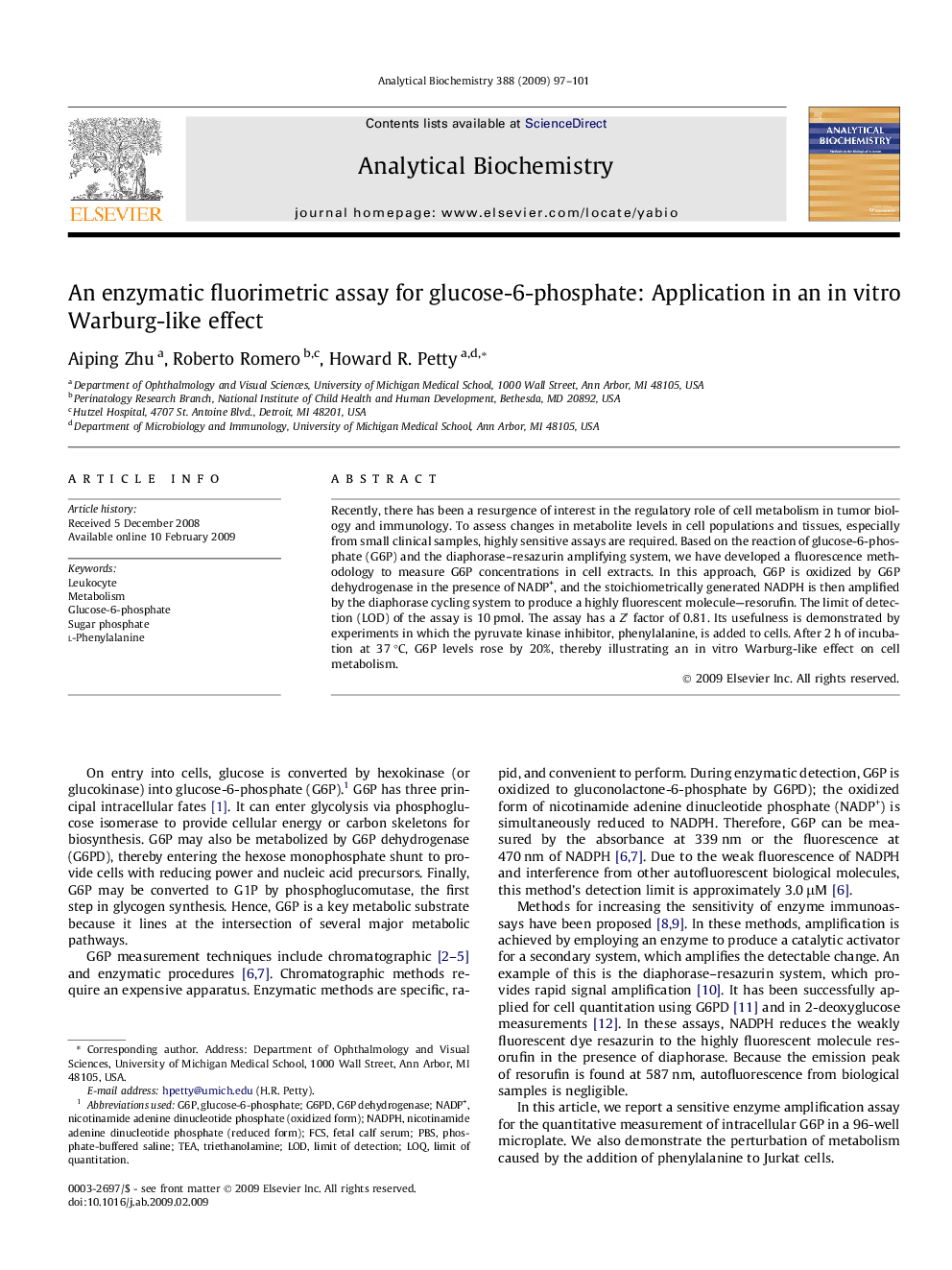| Article ID | Journal | Published Year | Pages | File Type |
|---|---|---|---|---|
| 1175891 | Analytical Biochemistry | 2009 | 5 Pages |
Recently, there has been a resurgence of interest in the regulatory role of cell metabolism in tumor biology and immunology. To assess changes in metabolite levels in cell populations and tissues, especially from small clinical samples, highly sensitive assays are required. Based on the reaction of glucose-6-phosphate (G6P) and the diaphorase–resazurin amplifying system, we have developed a fluorescence methodology to measure G6P concentrations in cell extracts. In this approach, G6P is oxidized by G6P dehydrogenase in the presence of NADP+, and the stoichiometrically generated NADPH is then amplified by the diaphorase cycling system to produce a highly fluorescent molecule—resorufin. The limit of detection (LOD) of the assay is 10 pmol. The assay has a Z′ factor of 0.81. Its usefulness is demonstrated by experiments in which the pyruvate kinase inhibitor, phenylalanine, is added to cells. After 2 h of incubation at 37 °C, G6P levels rose by 20%, thereby illustrating an in vitro Warburg-like effect on cell metabolism.
